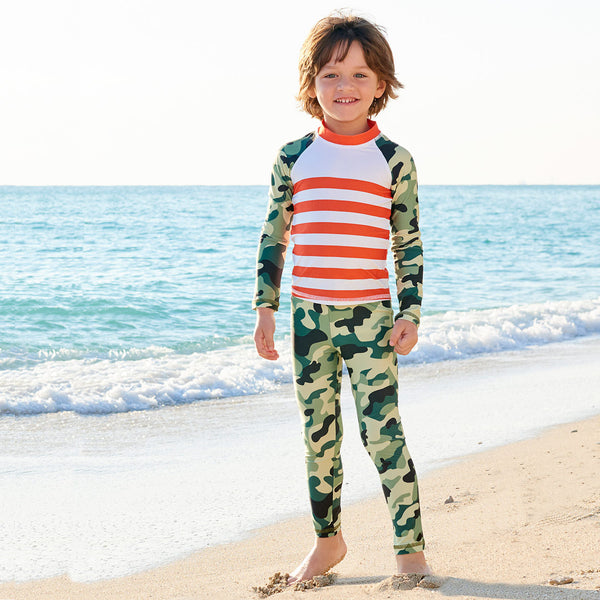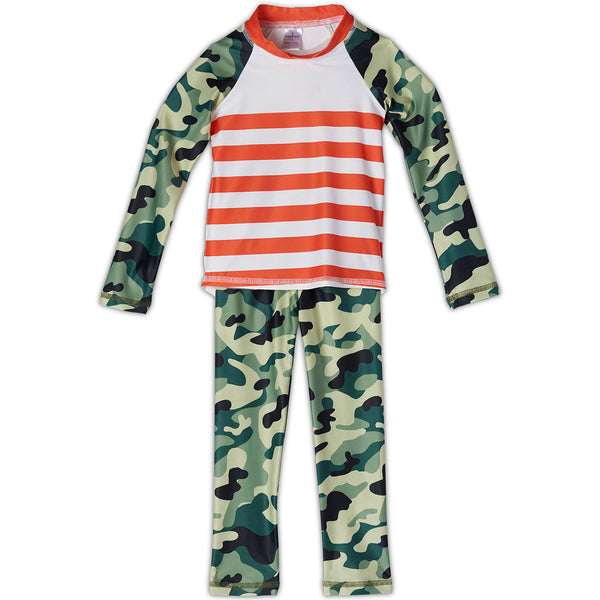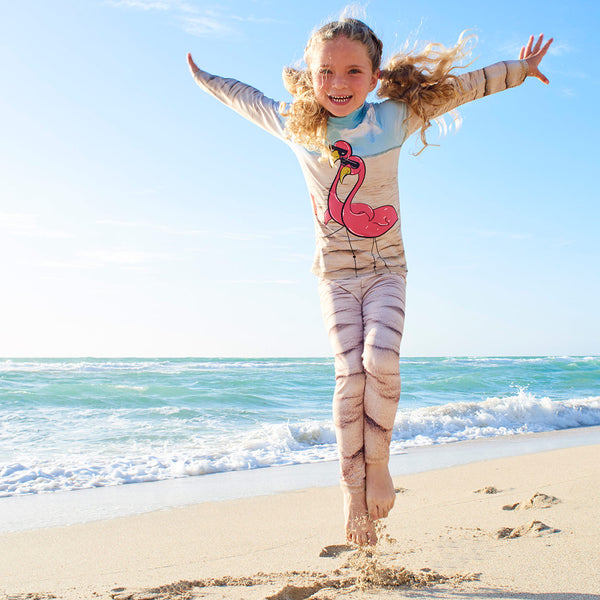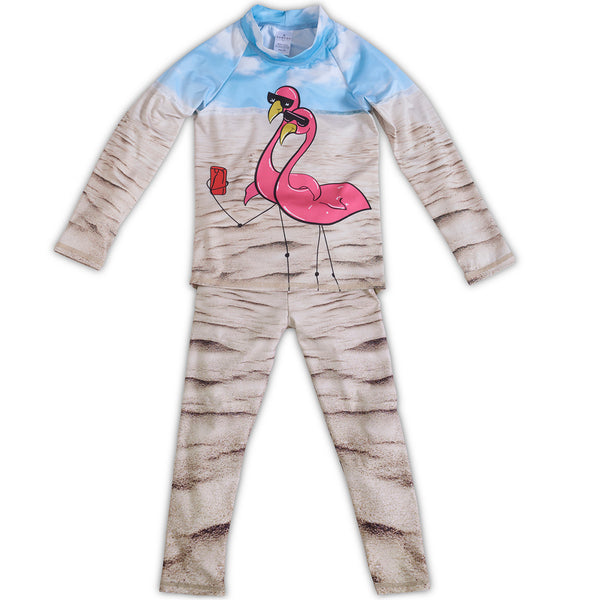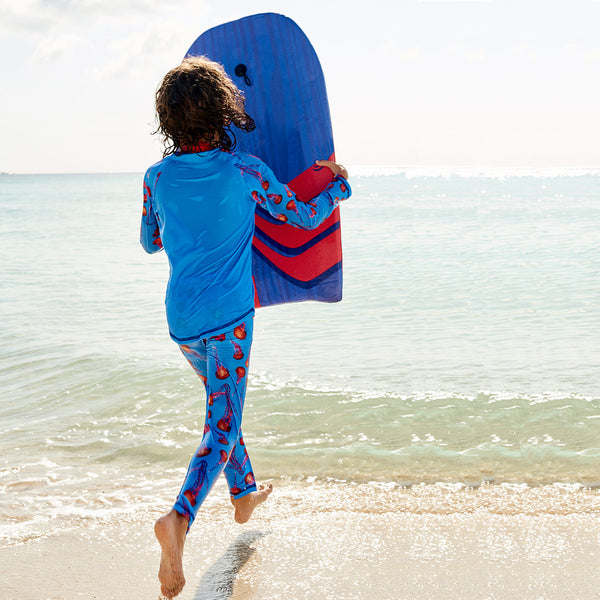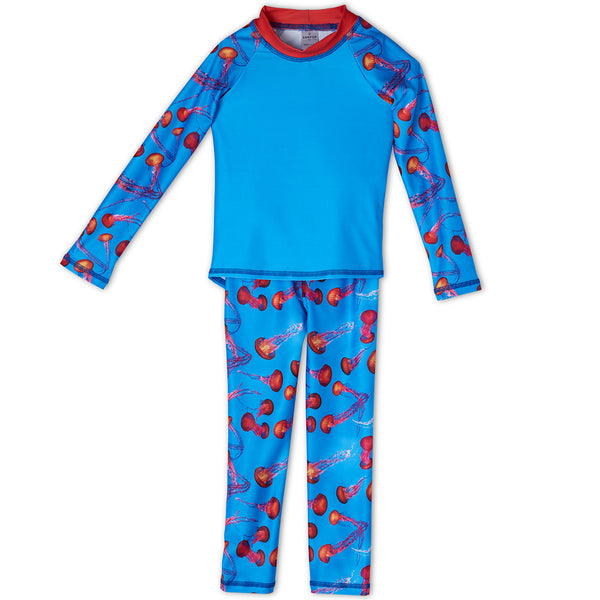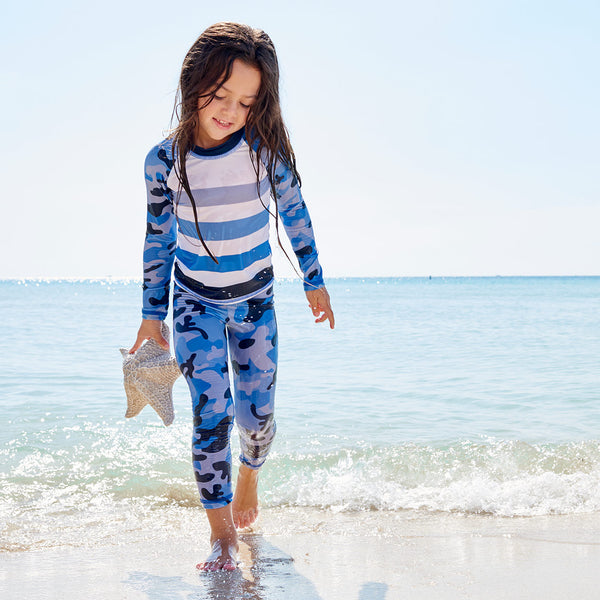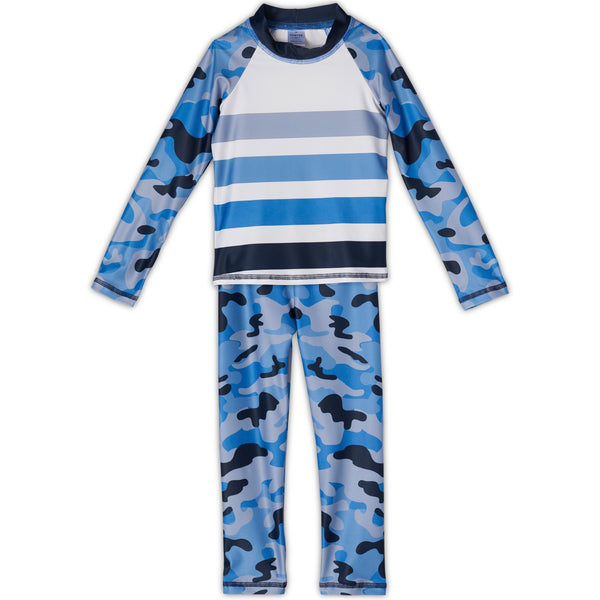The Latest News on Sun Safety
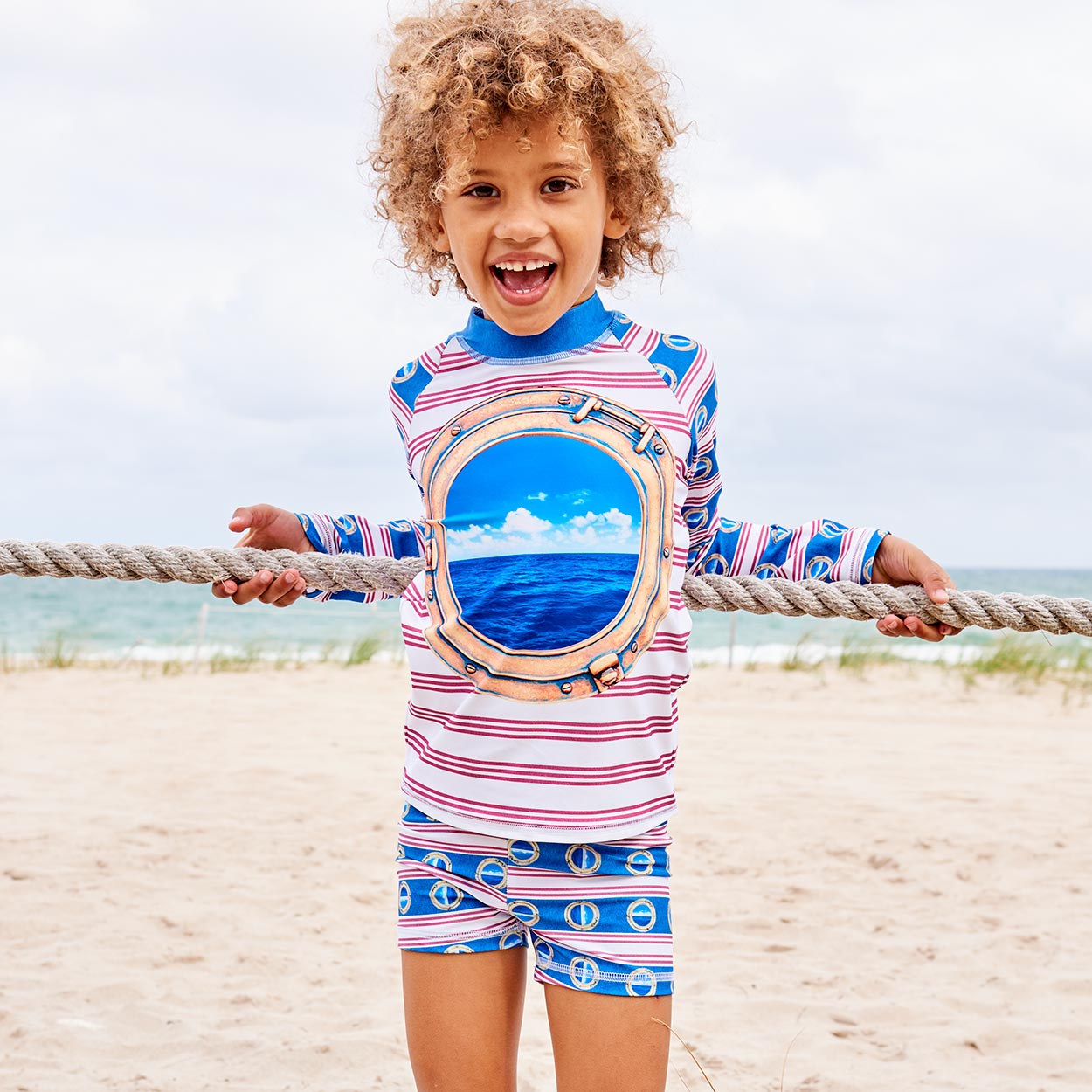

UNDERSTANDING THE SCIENCE OF THE SUN
Sun Pop Life’s UPF 50+ Kids Clothing Protects
Better than Sunscreen or Sunblock
Because 25% of sun damage occurs before children’s 18th birthday, let’s instill in them the importance of protecting their skin since an early age
- Gisela, Co-Owner of SUN POP LIFE.
There are so many confusing terms regarding sun protection ratings floating around. It is almost as if they are purposefully vague! We are here to provide clarity, so you can make the best decisions on how to protect your children.
How the Sun Can Cause Damage
The sun's gives off two types of rays. New research shifts our understanding of the skin damage caused by each, and how to protect ourselves. We still want to get the benefits of enjoying the outdoors, so knowing the up-to-date information helps you go out as safely as possible.
Ultraviolet A are the long-wave rays, and ultraviolet B are shortwave rays. You may have been raised to believe that only UVB was concerning, but the latest research has discovered a different type of damage caused by UVA that deserves equal diligence. Both play an important role in causing premature skin aging, eye damage, and skin cancers. They also suppress the immune system, reducing the ability to fight off illness and bounce back.
UVA rays are the main cause of tanning which is an indication of risk exposure. Whether outdoors, or in a tanning bed, UVA rays cause cumulative cellular damage over time. Any tan is the result of injury to the skin's DNA, and so are those freckles that seem so cute on kids. A tan is the body’s response to attempt to prevent further DNA damage.
UVB rays are the main cause of skin redness and sunburn. UVB rays tend to damage the more surface epidermal layers. They play a key role in the development of skin cancer and contribute to tanning and photoaging. UVB intensity varies by season, location, and time of day.
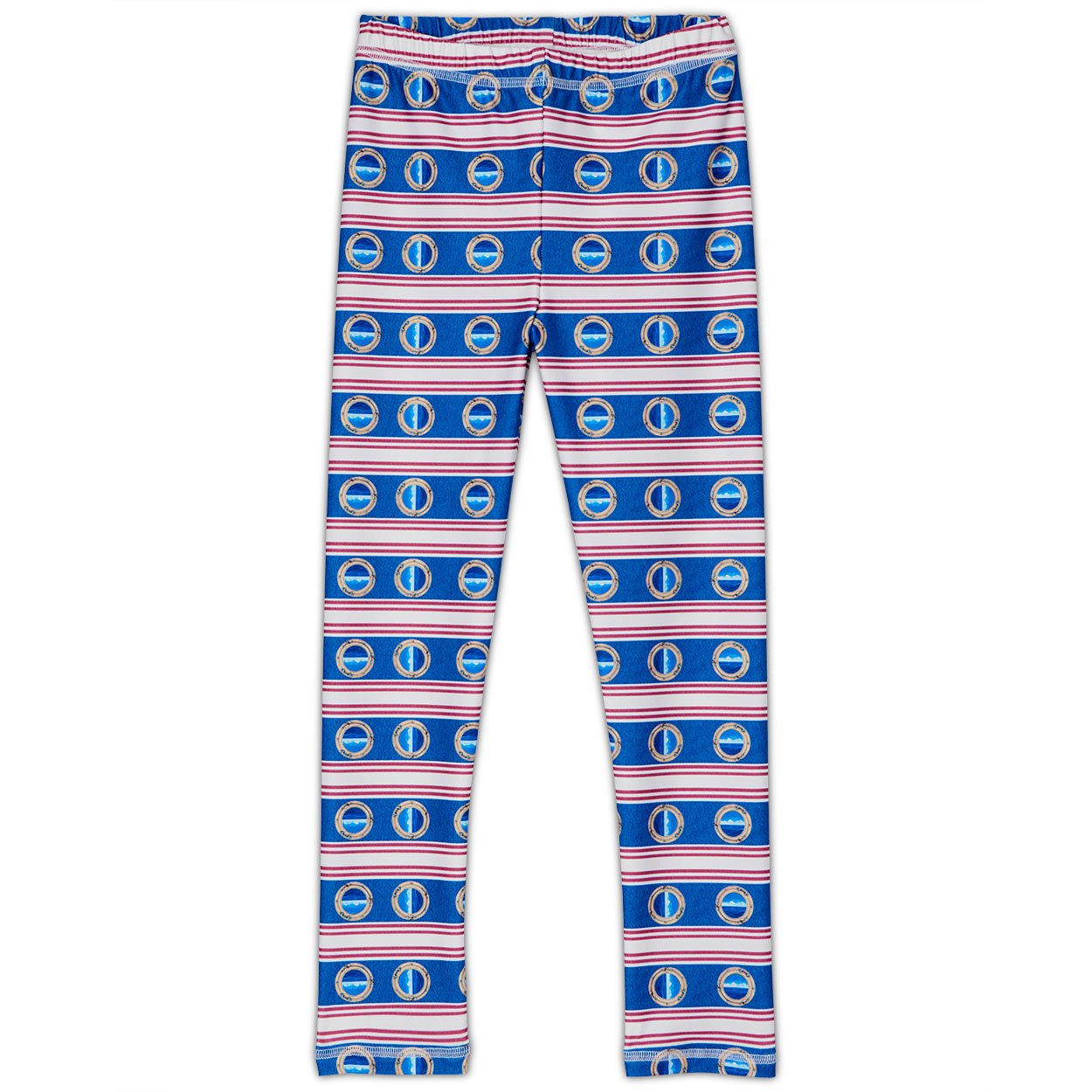
SPF Sunscreen Protection Numbers are Misleading
SPF is the “Sun Protection Factor” and is the rating system used for sunscreen and sunblock products. SPF refers to the ability of a sunscreen to block UVB rays, which cause sunburns, but not UVA rays, which are more closely linked to deeper skin damage. Both contribute to the skin cancer risk.
These ratings numbers are not user-friendly. When you shop for sunscreen, you can find products ranging from SPF of less than 10 to 100+... so why wouldn’t you just pick the highest rating and feel certain your family is protected? It would seem that SPF 100 protects 10 times as much as SPF 10, right? Unfortunately, it doesn’t work that way! The SPF rating is a measure of the minutes it would take to sunburn if you were not wearing any sunscreen (not the time it would take to burn wearing sunscreen).
The protection levels only go up by single digit percentage points in many cases, even though the SPF rating numbers jump up exponentially. Because of this, experts still recommend that despite whatever SPF number you choose, a water-resistant sunscreen should be applied generously one-half hour before going outdoors, and reapplied at least every two hours or after swimming, toweling dry, or sweating.
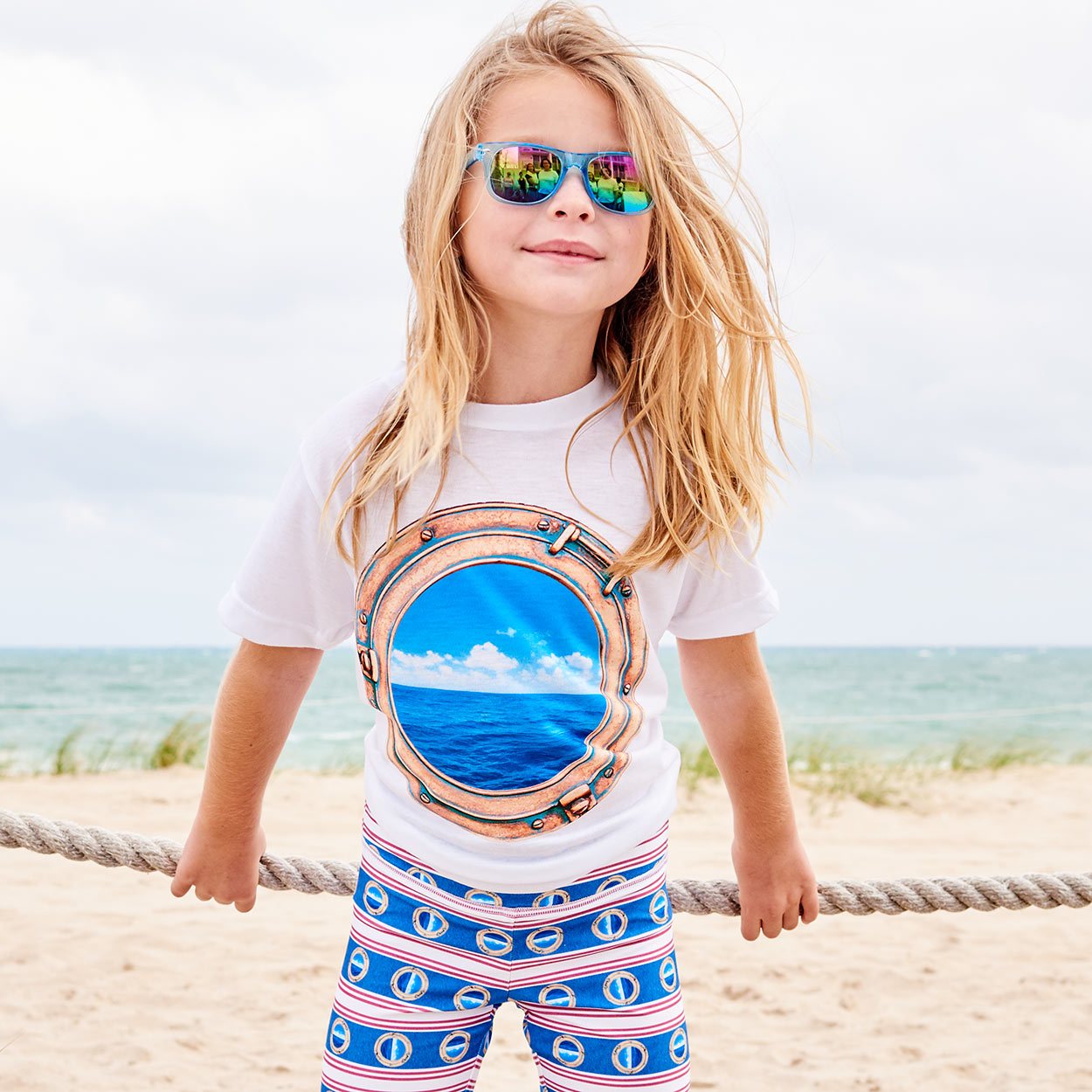
UPF Rated Clothing Is the Better Choice
UPF describes the “Ultraviolet Protection Factor” and is the protection effectiveness rating system for clothing. UPF gauges a material’s effectiveness against BOTH ultraviolet A (UVA) and ultraviolet B (UVB) light. UPF measures a physical barrier that is worn to provide coverage, versus a chemical or particle-based sunscreen that is applied to the skin. Wearing quality UPF rated sun protective clothing is the next safest thing to avoiding the sun! It is important to pay attention to the garment materials, since some brands lose sun protection qualities with washing.
There are two ways of achieving UV protection in sun protective garments;
1) Cheaply-produced, synthetic fabrics treated with a UV filter that comes off within a few washes.
2) Quality, chemical-free fabric made with a very tight weave that achieves sun protective properties in the way the fabric is made and is part of the permanent character of the material.
The special fabrics created by Sun Pop Life never use chemicals or treatments, and the protective properties last with easy care machine washing and tumble drying. Our products physically block 99.8% of harmful rays from reaching the skin and are lab tested UPF 50+ (the highest sun protection rating available).
*For full protection, even when wearing sun protective clothing, sunglasses and hats are recommended, and sunscreen should be applied to exposed skin such as the face, neck, ears, and tops of feet.
Start protection young and your kids will (hopefully) remember to thank you someday!

Sources:
Skin Cancer Foundation; Updated on September 20, 2017
